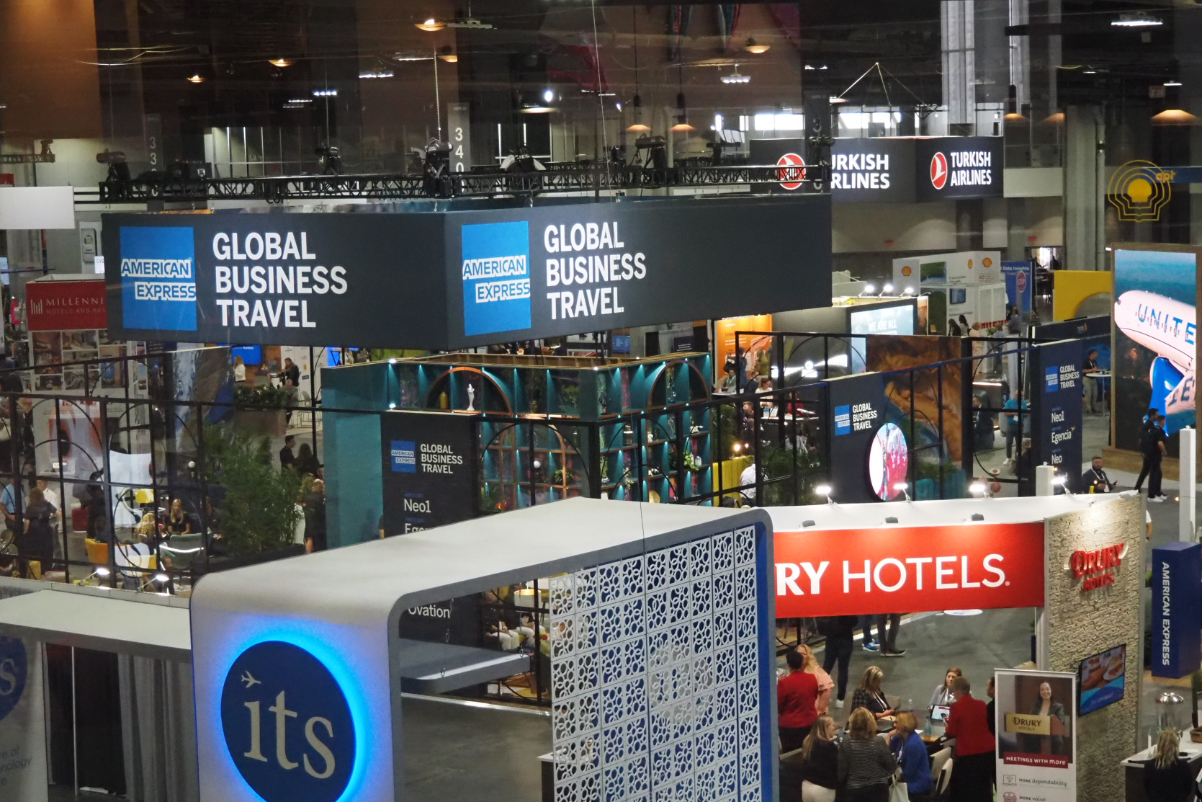Travel
Amex GBT Blends AI With Agents to Win Business Travel Share

Skift Take
The world’s largest travel-management company is using AI to read and respond to trip requests via emails. The goal is to free up human agents for more critical tasks, like perhaps explaining to executives why they can’t expense that “team-building” trip to Vegas.
Amex GBT (American Express Global Business Travel) has become a giant since spinning out from American Express a decade ago. Last year, it helped employees at about 20,000 companies book $6.3 billion in travel transactions. It’s probably the largest travel management company by sales, though many competitors don’t disclose their financials publicly, making comparisons tricky.
In March, Amex GBT announced plans to buy CWT, a travel management company formerly known as Carlson Wagonlit Travel, for $570 million. Britain’s antitrust watchdog, the Competition and Markets Authority, is taking a closer look at the planned transaction, and its process has delayed the proposed merger date into next year.
Quarterly earnings reports provide snapshots. However, a longer-term perspective can be useful to see what’s driving the company’s competitive position.
So, Skift got an update from Evan Konwiser, chief marketing and strategy officer.
Software + Service
- Konwiser emphasized Amex GBT’s evolution from a predominantly services company to a software-and-services hybrid. While many legacy competitors remain more than just agents helping people book travel, Amex GBT can offer multiple solutions tailored to different market segments rather than being one-size-fits-all.
- The company has invested heavily in building its software capabilities through acquisitions and organic development. Its 2021 acquisition of Egencia, Expedia’s business travel unit, and 2016 purchase of tech firm KDS helped. It’s built or bought self-booking tools for customers, aggregation and relevant display of travel options, and policy engines that overlay what an individual company’s rules may be on top of a universe of options.
- Konwiser said that tech enables the company to handle mass rebookings during large-scale disruptions. He cited the recent disruptions that resulted from a mass outage related to Crowdstrike security software.
- “We use CrowdStrike for our own software systems, and our technology team saw what was happening in APAC and stopped the upgrade while Europe and North America were still sleeping,” Konwiser said. “We were up and running way faster than a lot of other companies, and we enabled our agents to respond to the travel chaos.”
AI and Automation
- Konwiser described how Amex GBT is using AI. Example: AI-driven email servicing can improve efficiency and free up human agents for more critical tasks.
- “We’ve always done a tremendous amount of servicing by reading emails from customers, but it’s been a huge challenge for us because it’s not scalable,” Konwiser said.
- When agents manually read, route, and respond to every message, it creates bottlenecks and inconsistent service.
- Natural language processing can now accurately categorize incoming messages, from urgent flight changes to routine invoice requests. AI can also draft responses or initiate relevant actions to help agents respond more quickly.
- Not all players can capitalize on this opportunity as well as Amex GBT, Konwiser claimed. Online-only booking sites lack skilled agents, and traditional agencies may not have the tech capabilities.
- “Our proactive trauma care technology has been getting steadily better at both predicting and quickly reacting to delays and cancellations by automating a queue of outbound communication to triage and prioritize problems,” Konwiser said.
Beyond Just Bookings
- The company intends to create more integrated experiences across travel, payment, and expense management.
- Earlier this year, it launched a new expense management solution with American Express.
- “As a small business, you can sign up and start using it the same day by linking your Amex card,” Konwiser said. “You can deploy virtual cards with dynamic controls to all your people right in the tool to gain visibility and control over how your employees are spending.”
Adapting to Airline and Hotel Supplier Wishes
- Konwiser said Amex GBT has rapidly deployed content from NDC (the new distribution capability). Several airlines believe they’ll sell more using a more modern form of data exchange, NDC, instead of decades-old methods.
- “The good news is, because of all the work we’ve done over the last few years, rolling up our sleeves with airlines, with the GDSes [global distribution systems] and other tech partners, we’re now able to really deploy NDC at scale,” Konwiser said. “That continues to accelerate.”
- “But our view is we’re going to deploy NDC content only in a way that doesn’t break things for our customers,” Konwiser said. “The servicing has to work, and the offers have to work.”
- “NDC isn’t modern retailing, but it might be a potential gateway to modern retailing,” he said.
Sustainability
- As large corporate clients grapple with net-zero commitments, Amex GBT is developing tools to help corporations make travel choices that cut their carbon impacts.
- “A lot of companies signed up for net zero goals,” Konwiser said. “Well, it’s 2024. If you have a 2030 interim goal, the rubber has to hit the road.”
Between the lines: Konwiser implicitly addressed competition from tech-focused startups that have raised hundreds of millions in funding, such as Navan and TravelPerk. He emphasized Amex GBT’s strength in combining technology with operational expertise.








